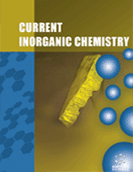Abstract
The mesoporous silica MCM-41 was first treated with an acetonitrile solution of the ligand pyCOCl (2) under reflux. Before isolating the grafted materials, the silylating agents R3SiCl (R = Ph, Me) were added to remove the residual Si-OH groups on the surface of the mesoporous materials. Mo(II) precursor complex [MoI2(CO)3(CH3CN)2], was subsequently introduced into the ligand-silicas by pore volume impregnation of a solution of the complex in CH2Cl2 at room temperature. The modified materials have been characterized by powder X-ray diffraction, FTIR, N2 adsorption, and solid-state CP-MAS NMR (13C, 29Si). The grafted MCM materials (2-3 wt.-% Mo) were tested as catalysts for the epoxidation of cyclooctene, styrene and geraniol with tert-butylhydroperoxide (TBHP) at 328 K. Selectivity to the epoxide in cyclooctene was complete. On recycling one time, some activity was lost from the first to second run, but not significantly. In the case of styrene and geraniol the systems were not as selective yielding benzaldehyde and geranial, respectively. In fact, surface tuning towards hydrophobicity proved to be adequate over product formation control to yield either the epoxide or aldehyde products.
Keywords: Adsorption, epoxidation catalysis, heterogeneous catalysis, hydrophobicity, MCM-41, mesoporous materials, molybdenum, silylation, Pyridine Ligand, Precursor Complex
 2
2

